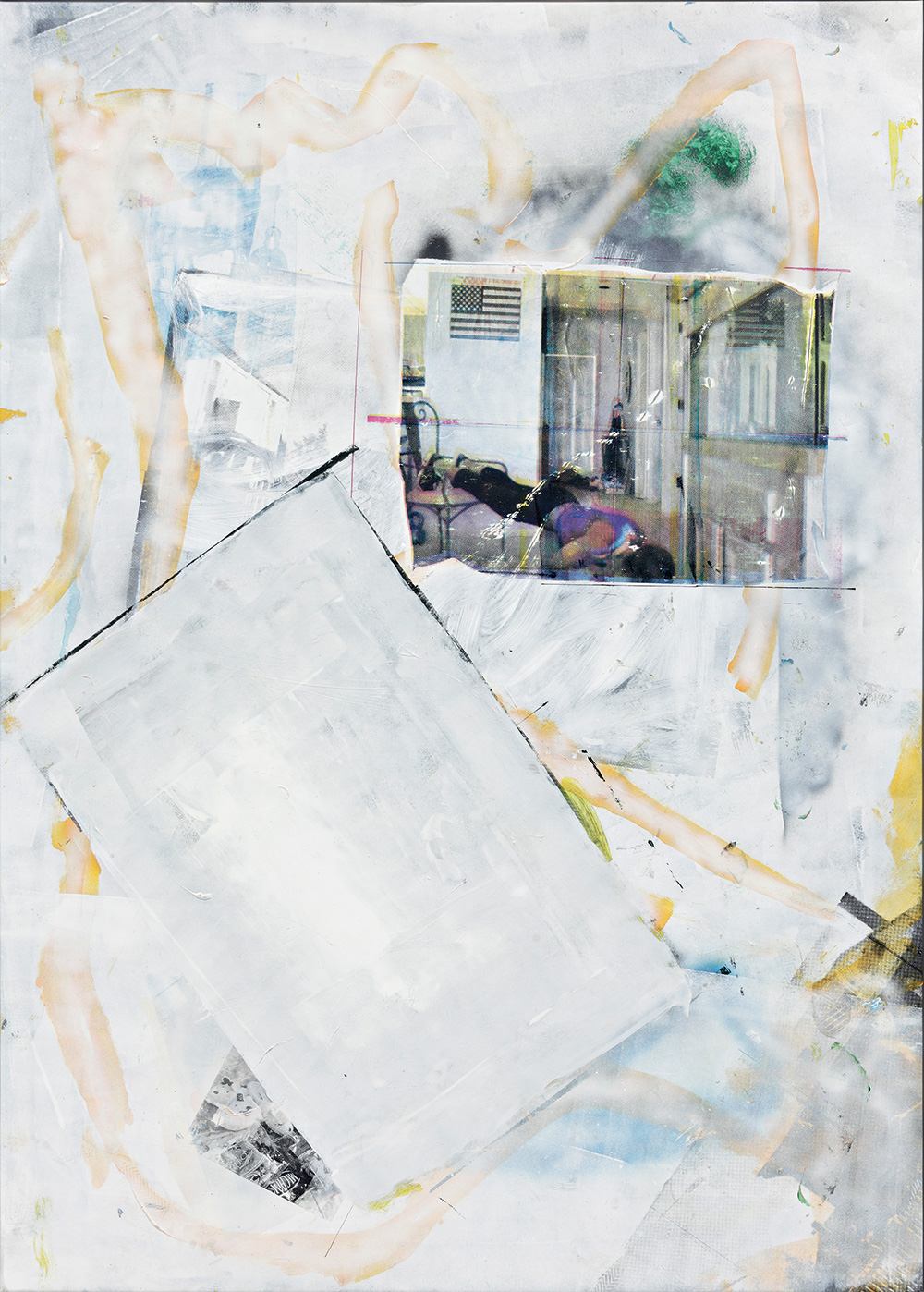Belgium
Leo
Gabin
Biography
The collective Leo Gabin was formed in 2000 by Lieven Deconinck, Gaëtan Begerem and Robin De Vooght. All three artists were born in Ghent and studied at the city’s fine arts school, one of the oldest in Belgium, where, as a collective, they have also taught.
Renowned on the contemporary art scene, Leo Gabin uses video, painting, drawing and sculpture in works that draw on contemporary media and internet imagery.

About the artworks
Now well known on the contemporary art scene, the Leo Gabin collective is interested in the thousands of images that form our visual and virtual, common and quotidian landscape. Internet represents a window onto the world where images of all kinds circulate and cohabit, providing a mass of information that must be deciphered. By appropriating these visions, the collective creates new works that capture this incessant movement on canvas, in silkscreen prints, videos and installations. Today, when everybody is an author and is helping enrich this virtual universe, the works of art elaborated by the trio attain a new dimension.
In them, techniques and materials combine yet always leave the original image, the creative source, visible. Leo Gabin is particularly interested in American culture, so important in the three artists’ young years. It stages the stereotypes, excesses and paradoxes to which it can give rise.
It is thus not surprising that the collective should be particularly interested in the behaviour of teenagers, for whom the border between private and public life is often a thin one, and who sometimes exhibit their actions on the web. These uploads are compiled into bizarre series of repetitive actions in the collective’s films. Youtube also gave Leo Gabin the idea of creating a detailed reproduction of a teenager’s bedroom that they had seen on the internet for their exhibition in the New Holland space in Saint Petersburg (Russia): walls covered with posters of Hollywood stars and pop signers, childish knick-knacks on the furniture, pink the dominant colour. In this way, the collective appropriates images or videos posted by individuals and places them in a new context, attracted both by the culture that produced them and by their exuberant and colourful visual interest.
In our environment, where the media flow never stops, this young collective promises to reveal unexpected aspects of current visual culture.
The artworks
03
BONE DANCE, 2013
Lacquer, spray paint, acrylic and silkscreen on canvas
210 x 150 cm
BONE DANCE, 2013
Lacquer, spray paint, acrylic and silkscreen on canvas
210 x 150 cm

NO INTRODUCTION, 2013
Lacquer, spray paint, acrylic and silkscreen on canvas
210 x 150 cm
NO INTRODUCTION, 2013
Lacquer, spray paint, acrylic and silkscreen on canvas
210 x 150 cm

POST FACE TAT, 2013
Lacquer, spray paint, acrylic and silkscreen on canvas
210 x 150 cm
POST FACE TAT, 2013
Lacquer, spray paint, acrylic and silkscreen on canvas
210 x 150 cm

